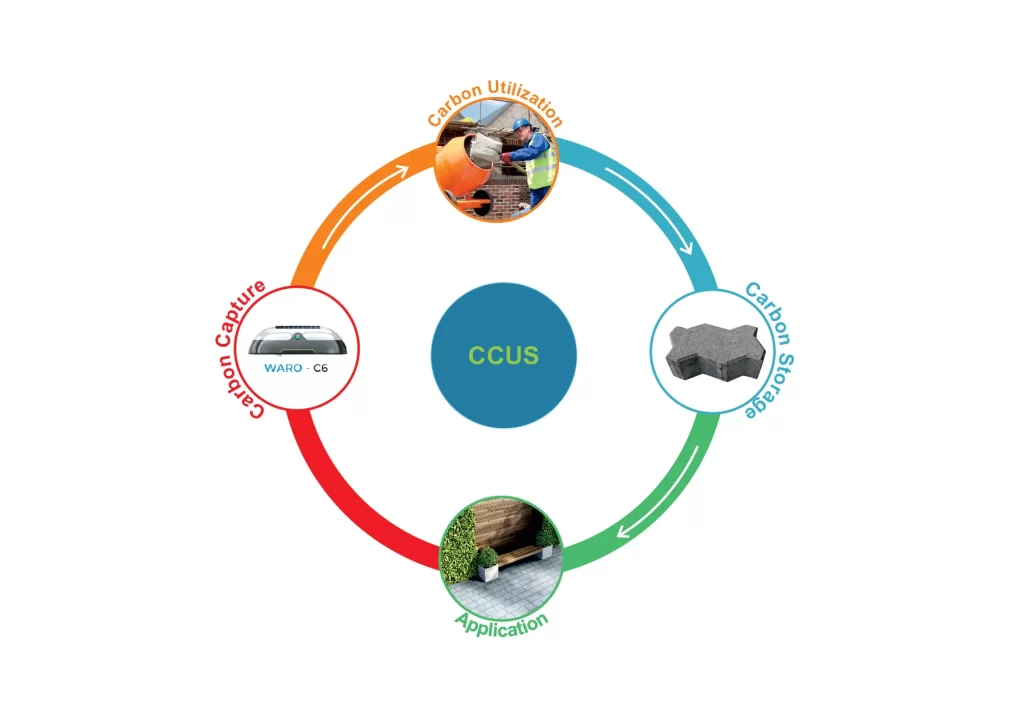CCUS
Carbon Capture, Usage and Storage (CCUS) is a technology that can capture and make effective use of the high concentrations of Carbon emitted by industrial activities.
Consequently, it has a key role to play in decarbonization and the addressing the challenge of global climate change.

CCUS and WARO C6's Pioneering Approach is the Future ofCarbon Capture and Storage Technology
Climate change is an undeniable reality, driven primarily by greenhouse gas emissions, particularly carbon dioxide (CO2). The International Energy Agency (IEA) reports global CO2 emissions reached a record high of 36.3 Billion Metric Tons (Gt) in 2021, highlighting the urgency of finding effective solutions.
Carbon Capture and Storage Technology
approach offers a comprehensive strategy for managing CO2 emissions:Capture
CO2 emissions are captured from industrial facilities like power plants, steel mills, and refineries before they enter the atmosphere.
Utilization
Captured CO2 can be used for various purposes, including enhanced oil recovery, production of low-carbon fuels, and creation of building materials.
Storage
Captured CO2 is permanently stored deep underground in geological formations, preventing its release back into the atmosphere.
Industry Recognition and Potential
WARO C6: A Game-Changer in CCUS
While traditional CCUS methods focus on capturing emissions from large point sources, WARO C6 offers a revolutionary approach. Its ability to capture carbon and dust emissions directly from the environment opens doors to broader application and impact.
Here’s how WARO C6 complements existing CCUS technologies:
Decentralized Capture
WARO C6 doesn’t require large-scale infrastructure modifications for deployment, making it adaptable to various settings.
Scalability
The technology can be scaled up or down depending on the environmental needs, allowing for targeted interventions in specific areas.
Complementary Approach
WARO C6 works alongside existing point-source capture methods, forming a comprehensive strategy for CO2 reduction.
The Road to a Cleaner Future
CCUS, with Carbon Capture and Storage Technology (WARO C6) playing a key role, offers a powerful tool for mitigating climate change. By capturing and storing CO2, we can reduce its atmospheric concentration, slow down global warming, and create a cleaner future for generations to come.